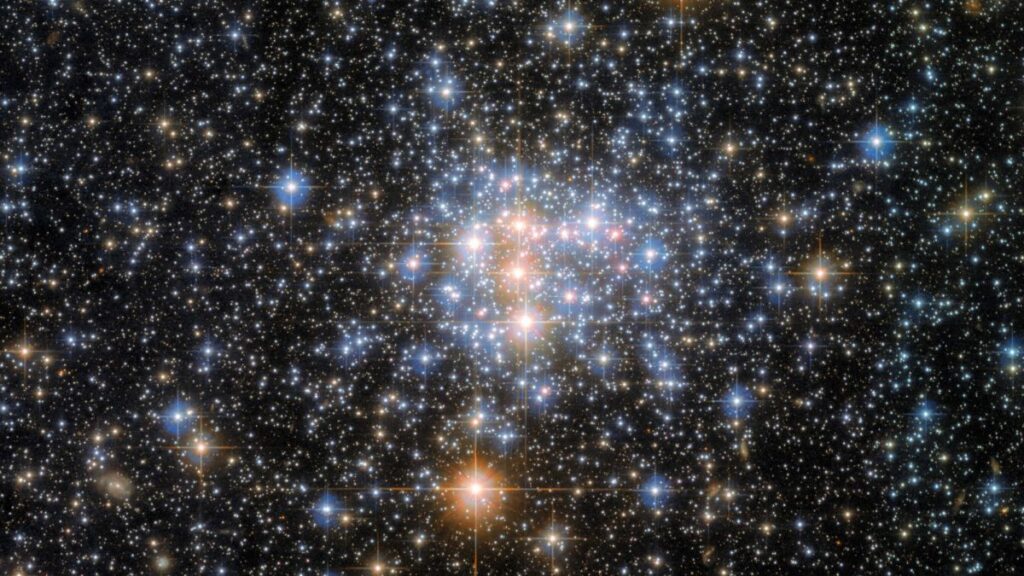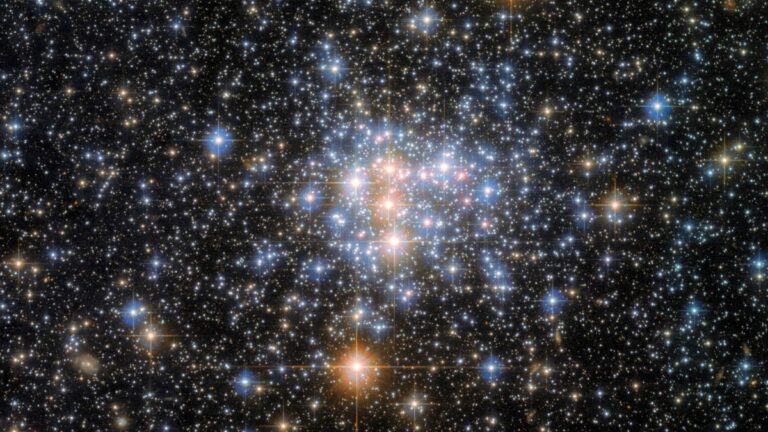Before it vanishes, the Hubble Space Telescope obtains an excellent glimpse of a nearby star cluster.
NGC 376 has already lost about 90% of its mass.
A breathtaking glimpse of a nearby open cluster of stars that is gradually blending into the dwarf galaxy around it is captured in a gorgeous new image from the Hubble Space Telescope.
The image depicts a portion of the Small Magellanic Cloud, a Milky Way dwarf galaxy that is only 200,000 light-years away from Earth and the smaller companion of the Large Magellanic Cloud, another nearby dwarf galaxy. Because of our proximity to it, we can examine it in such fine detail that the Hubble Space Telescope can clearly make out a small cluster of stars.

The Small Magellanic Cloud, an open cluster with the designation NGC 376, is only partially visible in the latest Hubble image, which NASA and the European Space Agency published in December 2022. Because of its more open, loosely linked structure, which enables us to recognize individual stars even in its most densely packed parts, an open cluster may be distinguished from a globular cluster. Globular clusters, in comparison, are so compact that stars can be just one light-year apart from one another and their center areas emit a uniform amount of light.
NGC 376 is substantially less massive than the Small Magellanic Cloud itself, despite the fact that it includes hundreds of millions of stars within the Small Magellanic Cloud. It is only around 3,400 solar masses. NGC 376, which is seen in the constellation Tucana in the southern hemisphere, was first spotted in 1826 by Scottish astronomer James Dunlop.
NGC 376 is reportedly in the process of merging with the larger Small Magellanic Cloud, having likely lost around 90% of its initial star mass, according to a 2011 research published in The Astrophysical Journal. Although the exact timing of that is unknown, it is unavoidable due to the steady depletion of star-forming gas and the gravitational attraction of the remainder of the Small Magellanic Cloud.
Data from two investigations, one using Hubble’s Advanced Camera for Surveys (ACS) and the other using both the ACS and Wide Field Camera 3 of Hubble, were combined to create the Hubble picture.
Do not forget to share your opinion with us to provide you with the best posts !




0 Comments